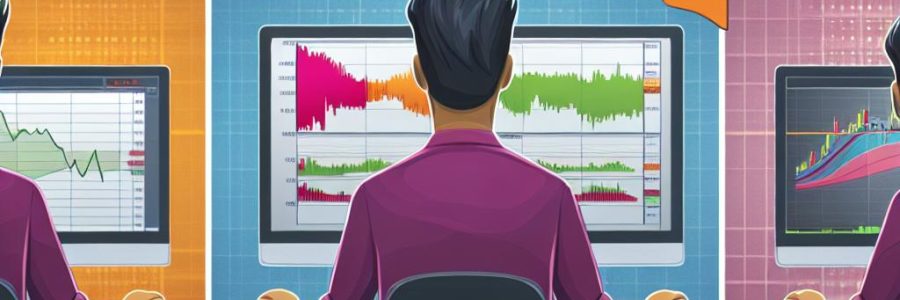
How to Choose a Trading Style: Day Trading vs. Swing Trading vs. Scalping
Introduction
The financial markets present a diverse array of opportunities for traders of all skill levels. Selecting the right trading style is central to establishing a successful trading journey. The three prominent styles—day trading, swing trading, and scalping—each offer unique approaches and require different levels of involvement, thereby catering to varying preferences and risk appetites. In this article, we aim to provide a comprehensive examination of these trading styles to assist you in making an informed choice tailored to your needs and capabilities.
Day Trading
Definition: At its core, day trading is the practice of buying and selling financial instruments within the span of a single trading day. Day traders aim to capitalize on short-term price fluctuations and continually adjust their positions, rarely holding any assets overnight.
Characteristics
Day trading necessitates a substantial investment of time and attention during market hours. Traders keep a close eye on market movements to analyze and execute trades swiftly.
Risk and Reward: The allure of day trading stems from the potential to generate significant profits by leveraging intraday market volatility. However, this potential is symmetrically matched by elevated risks, given the day-to-day unpredictability of market conditions.
Tools: Successful day trading typically relies on sophisticated trading platforms featuring real-time data, advanced charting capabilities, and technical analysis indicators. These tools are integral for monitoring price action and making informed trading decisions.
Pros and Cons
The primary advantage of day trading is the elimination of overnight risk, as all positions are closed by the end of the trading day. This allows traders to capitalize on quick returns sparked by intraday trends. Nevertheless, the downsides include high transaction costs due to frequent trading and the necessity of a high degree of mental focus and dedication throughout trading sessions.
Swing Trading
Definition: Swing trading occupies a space between day trading and long-term investing, with the objective of benefiting from short- to medium-term price fluctuations over several days or weeks.
Characteristics
The key to swing trading lies in examining market trends and patterns with somewhat less frequency than day trading. Traders aim to capture swings in the market, leveraging potential gains over a longer period compared to the rapid pace of day trading.
Risk and Reward: Offering moderate risk and reward, swing trading allows traders to profit from sustained market trends without the high turnover rate of day trading. This strategy relies on the ability to anticipate the continuation or reversal of trends using technical tools.
Tools: Swing traders often utilize chart patterns and common indicators like moving averages to guide their decisions and gauge market direction.
Pros and Cons
One advantage of swing trading is that it is less time-sensitive compared to day trading, aligning well with those who cannot monitor the market continuously. It provides the opportunity to capitalize on broader market trends, but there is the downside risk associated with holding positions overnight and potentially over a weekend. Additionally, while longer-term trends are captured, this style might miss out on short, rapid market movements.
Scalping
Definition: Scalping is a hyperactive trading strategy characterized by executing many trades throughout the day to profit from small price shifts.
Characteristics
In terms of time commitment, scalping is exceptionally demanding, with an emphasis on making numerous speedy transactions capturing minor price movements. This trading style requires precision and discipline as success hinges on executing many trades with minimal profit margins.
Risk and Reward: Scalping generates a series of small profits from each trade. While the risk is minimized per trade, the cumulative gains can be significant if managed correctly.
Tools: Scalping requires high-speed trading platforms with top-tier execution speed and the minimal latency possible to capitalize on momentary market shifts effectively.
Pros and Cons
The advantage of scalping lies in having minimal exposure to market risk on any given trade, given the short duration of holding each position. This style also offers frequent opportunities to profit. On the flip side, it demands unwavering focus, as the trader must constantly monitor the markets for trades. Additionally, the frequent buying and selling incur significant transaction costs that can erode the relatively small profits from each trade.
Conclusion
Ultimately, choosing the most suitable trading strategy requires aligning with your personal preferences, risk tolerance, and time commitment. Day trading may be appealing to those who seek quick returns and possess the ability to remain deeply immersed in market analysis throughout trading sessions. Swing traders may prefer a more balanced approach, dedicating less time and instead banking on broader trends. Scalpers, however, are those traders who thrive on intense focus and quick thinking, ready to exploit even the most minor price movements in the market. For further reading and detailed guides on the intricacies of each trading strategy, it may be beneficial to explore educational resources from reputable trading platforms or seek insights from experienced financial advisors.
This article was last updated on: March 20, 2025
